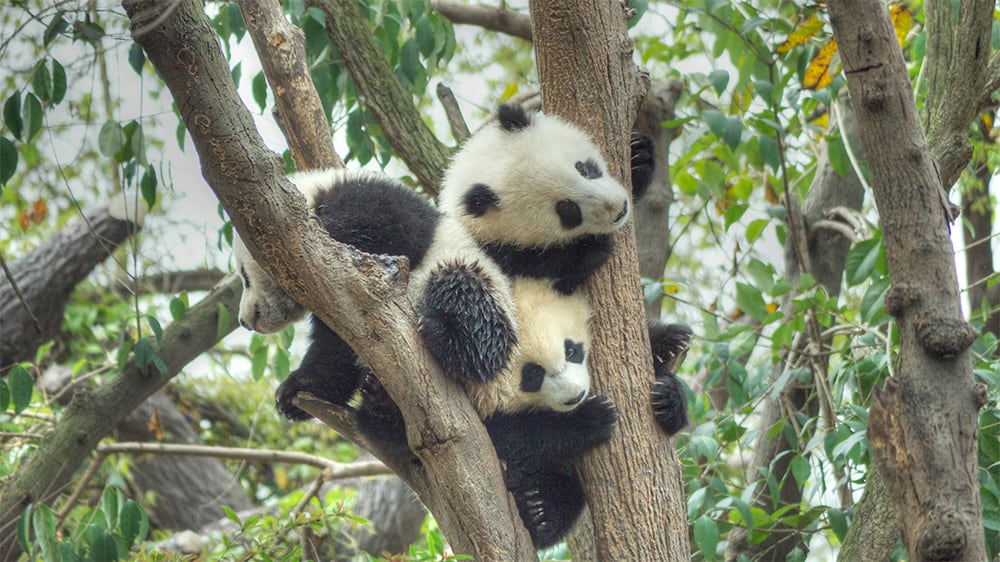BEIJING, China — It is a rare success story for environmental protection and wildlife conservation in China: the nation’s once-a-decade survey has found China’s wild panda population has risen by 268 animals, or 17 percent, to an estimated 1,864 in the mountainous forests of the west.
The jump has come thanks to a concerted effort to curb the twin threats of logging and poaching. An incredible 27 reserves have been created to protect pandas in the past decade alone. Barney Long, director of species conservation at the World Wildlife Fund in Washington, calls it a “huge success story that needs to be applauded.”
But not everything is black and white, as one panda appeared to remind us this week. A video shows a wild panda crossing and re-crossing a road in the early hours Thursday in the town of Yingxiu in the southwestern province of Sichuan. For although panda numbers are on the rise, they are facing a new threat: economic development.
China’s breakneck pace of infrastructure building is fragmenting habitats. Roads, railways, hydropower plants and high voltage transmission lines are cutting pandas off from each other, and dividing them into ever smaller, more isolated groups. Hundreds of mines and dozens of tourist attractions on the outskirts of their reserves put added pressure on those groups, as that wandering panda might have been effectively telling us.
“Pandas are very sensitive animals,” said Jin Tong, a conservation scientist with The Nature Conservancy in Beijing. “They dislike noise. Mining and other human activities might force them to move and resettle. “
There are now 33 separate panda populations in China, 24 of those groups so small they are deemed “high risk for survival,” according to the State Forestry Administration. Eighteen groups have fewer than 10 animals, and face an “extremely high risk of extinction.”
“If you have a small population under 30, genetically over time those populations are probably doomed,” said Long. “At least some of the little sub-populations need to be connected.”
Long says efforts are already under way to remove fences to allow some groups to make contact. A wildlife pass has also been constructed under one road. “But it is going to take a massive change to make sure infrastructure doesn’t hamper conservation,” he said.
“Obviously China is on a massive development curve, and we don’t want conservation to prevent development. It is a difficult conversation in any country, because doing this development correctly costs a lot more money.”
While gifts of captive-bred pandas have long been an important part of China’s soft diplomacy, the situation for wild animals reached crisis point in the mid 1980s — the animals’ population falling by more than half in a decade to just 1,114. But floods that killed thousands of people in 1980 woke the country up to the dangers of rampant deforestation, and stricter measures to combat poaching also helped protect pandas in the wild.
Today, there is huge political support for panda conservation, including from President Xi Jinping. And it is having knock-on effects for other species. The reserves, in temperate mountain forests of large biodiversity, also help protect everything from rare salamanders to pheasants and rhododendrons.
The success of panda conservation has also encouraged China to set up reserves to protect tigers and leopards near its northeastern border with Russia, Long says.
Still, some conservationists worry that China’s panda conservation effort is not being channeled in the right direction.
Wang Daju, a researcher at Peking University’s School of Life Sciences, says China still puts too much emphasis on a captive breeding program that, despite decades of efforts, has failed to reintroduce any animals back into the wild. Eleven breeding institutions now hold 375 pandas in captivity.
“The government sees the rapid increase in the number of captive pandas as an achievement of the panda conservation effort,” he said. “But this is wrong. The urgent need of wild panda conservation is being neglected, and limited resources flow to breed more captive pandas.”
—
Denyer is The Post’s bureau chief in China. He served previously as bureau chief in India and as a Reuters bureau chief in Washington, India and Pakistan.
© 2015, The Washington Post








